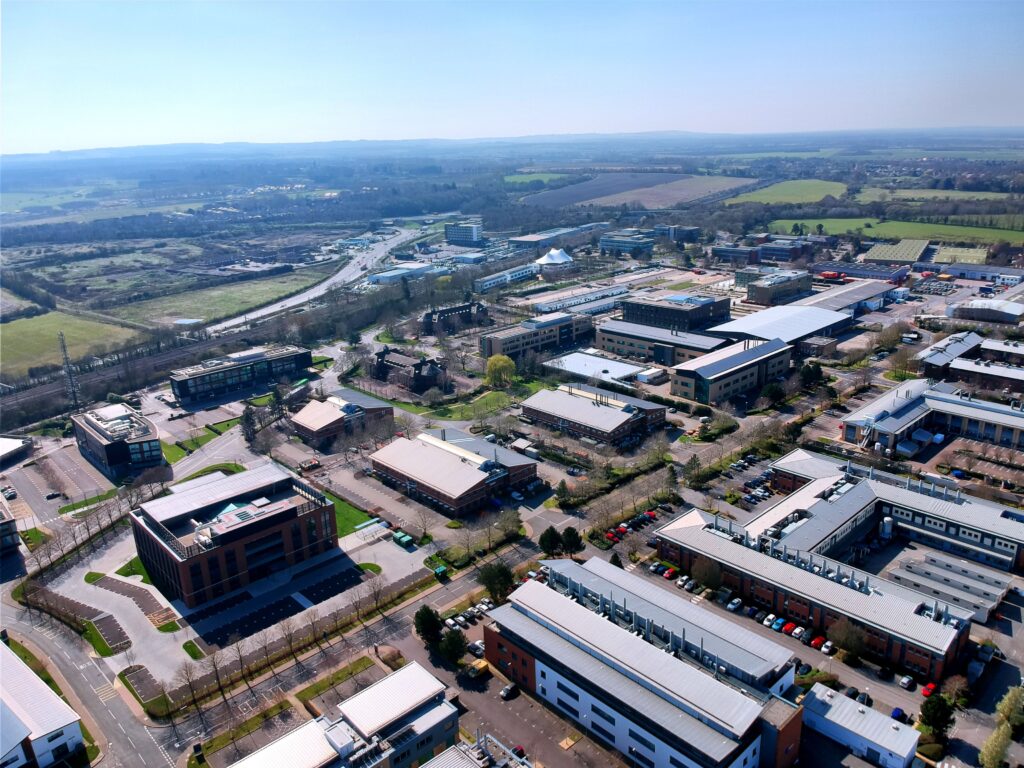
Councillor Liz Leffman
Leader, Oxfordshire County CouncilOxfordshire is home to a globally leading critical mass of science, learning, talent, intellect, and inspiration. It is no surprise that we enjoy an internationally competitive advantage when it comes to innovation, given the world-class academic institutions, technological assets, and private sector leadership that call Oxfordshire ‘home’.
Other places around the country may lay claim to similar strengths in research and technology, but, as someone who has witnessed the growth and development of this county, I can attest with confidence that it is Oxfordshire’s innovation ecosystem that truly sets us apart.
While this advantage is a privilege for those of us who live and work in the county, my Cabinet and I also treat it as a huge responsibility. One of the top priorities for my administration is to ensure we use every lever at our disposal to further enable our businesses, institutions, people, and places to flourish.
While Oxford is a significant hub, I’ve seen substantial activity happening across the county. We must view the innovation ecosystem as part of a wider system – one that supports economic growth, enhances connectivity and builds a future for the next generation. This broader perspective is essential if we’re serious about delivering UK plc’s economic prosperity, and that means investing in connectivity between our great places. After all, if people can’t connect, then they can’t share their energy and ideas, and we will fail to generate the productivity we know we are capable of.
Take, for example, our universities – especially the University of Oxford – which have been instrumental in driving innovative R&D spinouts and growing companies. The ecosystem they work within includes science parks like Harwell, Milton Park, and Culham, as well as our thriving market towns such as Abingdon, Banbury, Didcot, and Witney. Together, they form a comprehensive network that extends well beyond the city of Oxford.
Oxfordshire’s innovation landscape is wonderfully diverse. It includes everything from one- and two-person startups to medium-sized enterprises and global giants. Supporting businesses of all sizes is essential. Whether it’s providing scale for companies like Siemens and major pharmaceutical firms, or nurturing university spinouts and incubators, we need to ensure the whole ecosystem thrives.
But innovation must be inclusive. We need to connect these opportunities with our local communities to reduce inequalities, which are still too deep and wide. Everyone should have access to the amazing jobs emerging in green tech, AI, quantum, and beyond.
Apprenticeship strategies and supported internships are vital tools for bridging that gap – from entry-level roles to PhD-level work in digital artificial intelligence and engineering. And we mustn’t forget ancillary jobs that the innovation sector can generate, such as hospitality, catering, cleaning, security, facilities management, and grounds maintenance.
So, What’s Oxfordshire County Council’s Role in all This?
Well, we have a big part to play – and we are committed to playing it. Through strategic planning, we will ensure there are enough incubation spaces for startups and growing businesses. And we will improve public transport to enhance connectivity across the county. An integrated, affordable system will reduce travel time and make Oxfordshire feel smaller – bringing our innovation hubs closer together, both physically and digitally.
We’re championing Our Oxfordshire Story, utilising the county’s national and global significance and mixture of history and hi-tech, to further position the county as the home for science, learning, talent, intellect, entrepreneurship, and inspiration – both domestically and overseas
The council’s own pioneering service, Innovate Oxfordshire, goes from strength to strength in finding solutions, improving efficiency, and delivering results for Oxfordshire businesses and organisations.
The first of its kind within local government, Innovate Oxfordshire is driven by resident need and experience rather than profit. It works across local government and industry – meaning it can integrate seamlessly with current processes and teams. By acting as a bridge between businesses and research organisations, it leverages innovation funding to achieve the council’s objectives, identifying new technologies and processes to address future challenges and providing policy support to future-proof decision-making.
Examples of projects Innovate Oxfordshire is leading include 5G innovation across the region, connected autonomous vehicles, quantum to futureproof maintenance, next generation zero emission mobility, and even the use of robotics in health care. All are made possible by strong partnerships with business and academic communities across Oxfordshire and beyond.
Advanced Oxford, Oxfordshire’s innovation engine, has called for leadership across the region to be strengthened in relation to innovation. I agree.
Oxfordshire has a competitive edge in innovation and research and development. We have the highest number of patents pending in the country and lead the UK in the value of university spinouts – outstripping even Cambridge. These are assets we must leverage responsibly and proudly.
Regional collaboration is also essential. The Ox-Cam corridor, stretching from Oxford to Cambridge, is a vital artery for innovation. Our relationships with places like Cranfield and Milton Keynes bring in different types of innovation, skills, and assets that enrich our own capabilities.
And it doesn’t stop there. Our ties down to London and up the M40 corridor to the Motorsport Valley of the West Midlands and Warwickshire are hugely significant. These connections help us leverage strengths in advanced manufacturing, engineering, and future energy systems.
But Oxfordshire cannot continue to compete on the global stage alone. Doing so means we risk falling behind our competitors in Greater Manchester, the Liverpool City Region, the West Midlands, and, yes, Cambridgeshire and Peterborough. Regions united by the scale of their economic geographies, shared ambition, and sense of place.
All these factors emphasise why we want to move towards a mayoral combined authority on the scale of the Thames Valley, at least to bring all the innovation assets together and make sure Oxfordshire is driving this part of a European Silicon Valley.

